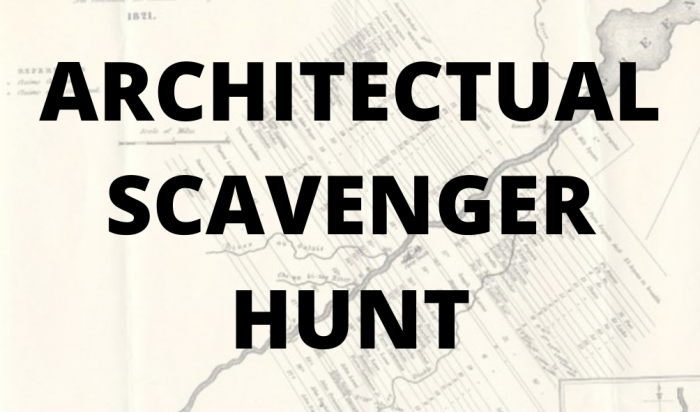Brown County Historical Society & Hazelwood Historic House offer a variety of engaging and interactive educational programs. Content can be tailored to fit specific educational goals. Programs typically last for an hour to an hour and a half but can be customized to fit your schedule.
Pricing:
Students: $3.00
Teachers: No cost
Parent Chaperones: $3.00

Students set out on an architecture walk to study our community’s history through architecture.
Students will:
- Discover the unique architectural styles of the Astor Historic District through an age-appropriate scavenger hunt.
- Examine different styles of houses and building materials and learn some basic architectural terms.
- Create their own sketch of an ideal home utilizing their newly discovered design skills.
By the end of the program, students will be able to reflect on how different housing styles can influence the historical growth of a city.

Built for the Morgan Martin family in 1838, Hazelwood Historic House is filled with treasures, and objects that span 100 years of family life. Students will investigate daily life in the 19th century through original objects, photographs, and stories
Students will:
- Become history detectives as they explore the identity and use of objects that belonged to the Martins.
- Discover what daily life was like for the Martin children.
- Discover Morgan L. Martin’s influence on Wisconsin becoming a territory and a state.
- Explore the neighborhood through an architectural walk and learn how the neighborhood changed over the 19th century.
- Using historic maps, determine how early settlers used & changed the Fox River to build the community.
By the end of the program, students will be able to compare life today to that of the lives of the Martin children. They will be able to Identify changes in the neighborhood with the use of historic maps.
Recommended for grades 3 – 4

Students will use historical images as their primary documents to learn about a variety of themes. This program is an interactive, historical exploration that uses and highlights the Brown County Historical Society’s digital archive collection. A variety of themes are available to correspond to individual interests. While the Society’s images are local, they provide opportunities for discussion of national issues such as transportation, WWI, WWII, urbanization, and preservation.

Throughout the 19th century there were no television sets or video games, but children found plenty of games to play. Children played guessing games, word games, and board games referred to as parlor games. Outdoor games included many games still played today.
Students will:
- Engage in a scavenger hunt through Hazelwood to discover artifacts the Martin family used throughout their lives.
- Play a classic parlor game that many 19th century family and friends would part take in when hosting parties or holidays.
- Try their hand at several historic toys such as a Ball & Cup, Jacob’s Ladder, and Tops.
- Enjoy a traditional game outside in Hazelwood’s backyard.
By the end of the program, students will be able to use their knowledge & creativity to design their own game.

During the Victorian Era, navigating society depended upon good manners. To be accepted in society, one had to follow the “do’s and don’ts” of proper etiquette. Students are invited to learn to be a proper lady or gentleman of the 19th century.
Students will:
- Design calling cards and learn about the etiquette of visiting with family, friends, & acquaintances prior to the invention of the telephone.
- Explore Hazelwood and discover the social rules involved in being proper hosts & guests.
- Join in a parlor game that tests student’s creativity.
- Discuss 19th century manners and compare what might be considered old fashioned and what might be useful today.
By the end of the program, students will be able to apply what they learned in a 19th century social etiquette simulation.

Visit Hazelwood Historic House to learn about life in the 1800s through the Martin Family.
Students will:
- Discuss an immigrant’s journey and discover your own family roots.
- Be creative–design their own family tree and family crest.
- Share their family story and bring a photo of an object that is special to their family.
By the end of the program, students will be able to compare the Martin family’s journey to Wisconsin and contrast it to their own family’s journey.
